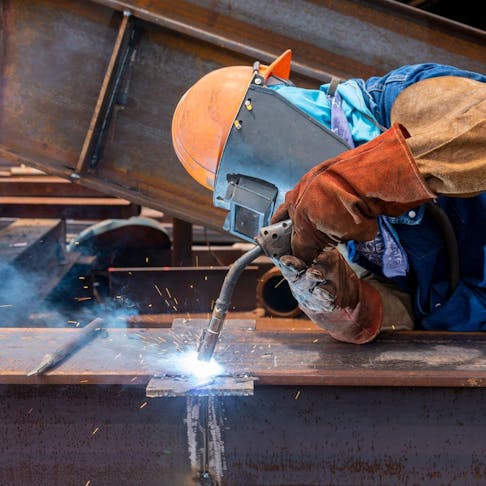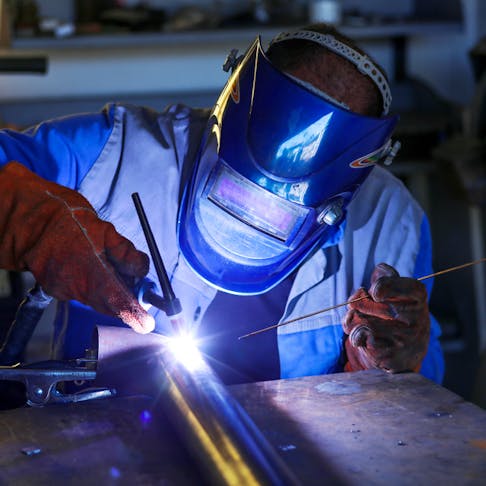Usual Welding Repair Work Issues and Exactly How to Address Them Successfully
Welding repair services typically encounter a variety of issues that can endanger the integrity of the final item. Typical issues consist of poor infiltration, porosity, and misalignment, amongst others. Each defect offers special challenges that call for details techniques for resolution. Understanding these issues is essential for welders aiming to improve their abilities and outcomes. This conversation will certainly explore these typical welding repair problems and efficient approaches to address them.
Insufficient Penetration
Insufficient penetration occurs when the weld steel stops working to totally fuse with the base product, leading to weak joints and prospective structural failings. This issue typically comes from inadequate warm input, inaccurate electrode angle, or inappropriate welding rate. Welders might experience poor penetration due to a miscalculation of the essential parameters for a certain product thickness or kind. Furthermore, contamination on the base material's surface area can impede efficient bonding, intensifying the trouble. To deal with poor penetration, welders need to ensure suitable settings on their tools and keep a tidy job surface area. Routine evaluation of welds is advised to recognize any type of deficiencies early, enabling timely improvements and the avoidance of jeopardized architectural integrity in welded settings up.
Porosity
Porosity is a typical flaw in welded joints that shows up as small gas bubbles trapped within the weld metal. This issue can jeopardize the stability of the weld, resulting in lowered stamina and possible failing under tension. Montana Mobile Welding and Repair Belgrade. Porosity commonly emerges from contamination, wetness, or incorrect welding methods, which enable gases to get away right into the molten weld pool. To attend to porosity, welders must guarantee correct surface prep work, preserve a clean working setting, and use appropriate welding specifications. Furthermore, picking the ideal filler material and protecting gas can reduce gas entrapment. Normal examination and screening of welds can assist determine porosity early, guaranteeing prompt corrective actions are taken, thereby protecting the top quality and reliability of the bonded structure
Misalignment
Misalignment in welding can emerge from different aspects, including improper setup and thermal expansion. Understanding the source is vital for effective resolution. Numerous correction methods are available to straighten components and assure architectural integrity.
Reasons for Imbalance
Welding imbalance often stems from a variety of underlying problems that can endanger structural honesty. One main reason is incorrect fit-up of components prior to welding, which can cause gaps and irregular surface areas. Variants in thermal development throughout the welding process can additionally cause distortion, particularly if the materials being joined have various coefficients of expansion. In addition, insufficient fixturing and securing might stop working to hold parts safely in place, bring about movement during welding. Poorly kept devices, consisting of welding equipments and devices, might present incongruities in the weld bead, more adding to misalignment. Operator mistake, stemming from insufficient training or experience, can also play a considerable duty in creating misaligned welds.

Improvement Strategies Readily Available
Resolving imbalance effectively calls for a mix of corrective techniques tailored to the certain issues at hand. One usual method is using fixtures or jigs to hold parts in the correct setting throughout welding, making sure regular placement. Additionally, preheating the products can help decrease distortion and improve fit-up. For significant misalignment, mechanical realignment techniques, such as utilizing hydraulic jacks or clamps, can be employed to fix the position before welding. Post-weld warm treatment might additionally be needed to eliminate stresses brought on by misalignment. Mindful examination and modification during the configuration phase can prevent imbalance concerns from becoming significant problems, promoting a smoother welding procedure and improving total structural integrity.
Distortion
Distortion is a common difficulty in welding that can arise from different elements, consisting of irregular heating and cooling. Understanding the reasons of distortion is vital for carrying out reliable prevention strategies. Resolving this concern not just improves structural honesty but likewise enhances the overall quality of the weld.
Reasons for Distortion
When subjected to the extreme warm of welding, materials often undertake modifications that can lead to distortion. This sensation largely occurs from thermal growth and tightening during the welding process. As the weld location warms up, the material broadens; upon cooling, it gets, which can create internal anxieties. In enhancement, unequal home heating across a workpiece can worsen these anxieties, causing bending or bending. The kind of product likewise plays a substantial role; steels with varying thermal conductivity and coefficients of growth might respond in different ways, resulting in unforeseeable distortions. Moreover, bad joint style and insufficient fixturing can add to imbalance during welding, enhancing the chance of distortion. Understanding these causes is essential for reliable welding repair and prevention approaches.
Prevention Techniques
Efficient avoidance methods for distortion during welding concentrate on regulating heat input and making sure correct joint layout. Preserving a consistent warmth input assists to reduce thermal expansion and contraction, which can bring about distortion. Utilizing methods such as preheating the work surface can likewise reduce the temperature level slope, promoting consistent home heating. Additionally, choosing suitable joint designs, such as T-joints or lap joints, can boost stability and reduce tension focus. Implementing proper fixturing to safeguard the work surfaces in position additionally help in preserving placement throughout the welding procedure. Ultimately, staggered welding sequences can disperse warmth more evenly, preventing local distortion. find this By applying these methods, welders can substantially reduce the chance of distortion and improve the general quality of their welds.
Breaking
Fracturing is an usual concern encountered in welding repair work, typically resulting from different aspects such as inappropriate cooling prices, material selection, or inadequate joint preparation. The event of splits can significantly endanger the integrity of the weld, causing prospective failings throughout operation. To resolve this issue, welders should first analyze the root creates, guaranteeing that materials work and suitably chosen for the specific application. Furthermore, regulating the air conditioning rate throughout the welding procedure is important; rapid air conditioning can induce anxiety and bring about splitting. Proper joint design and prep work likewise add to decreasing the risk. Carrying out these techniques can boost weld quality and toughness, inevitably reducing the probability of breaking in completed weldments.

Insufficient Combination
A considerable problem in welding repair services is incomplete combination, which occurs when the weld metal does not effectively bond with the base product or previous weld passes - Montana Mobile Welding and Repair. This issue can cause weaknesses in the joint, possibly endangering the stability of the bonded framework. Factors adding to insufficient fusion consist of inadequate heat input, incorrect welding technique, and contamination of the surface areas being signed up with. To resolve this problem successfully, welders should assure proper pre-weld cleaning and surface area preparation, as well as change their welding specifications to accomplish sufficient infiltration and fusion. Routine evaluation during the welding process can likewise assist determine insufficient blend early, enabling prompt restorative procedures to boost the total high quality of the weld
Overheating
While welding fixings can boost architectural integrity, overheating provides a considerable difficulty that can cause material destruction. Too much warm during welding can modify the mechanical properties of steels, resulting in decreased strength, raised brittleness, and bending. This phenomenon is specifically important in high-stress applications where structural reliability is paramount. Recognizing getting too hot can entail visual assessments for discoloration or distortion, as well as monitoring temperature during the welding procedure. To alleviate the threats associated with getting too hot, welders must utilize suitable methods, such as controlling warmth input, adjusting traveling speed, and making use of suitable filler products. Furthermore, carrying click here to find out more out pre- and post-weld warm treatments my review here can aid restore product properties and improve the overall top quality of the repair work, guaranteeing long-term performance and safety.
Frequently Asked Inquiries
What Are the Usual Indicators of a Welding Defect?

Exactly How Can I Check My Welds for Quality?
To check welds for top quality, one can make use of aesthetic inspections, ultrasonic screening, and radiographic methods. Each technique guarantees architectural stability, recognizes flaws, and confirms adherence to defined standards, eventually boosting the reliability of the welded joints.
What Safety and security Safety Measures Should I Take While Welding?
When welding, one ought to prioritize security by putting on appropriate personal protective tools, making certain proper ventilation, safeguarding combustible materials away, preserving a tidy work space, and understanding environments to avoid injuries and crashes.
Can I Fix a Weld Without Redoing the Entire Joint?
Repairing a weld without renovating the whole joint is possible, relying on the damage (Montana Mobile Welding and Repair Welding). Techniques such as grinding, adding filler material, or using a welding process can effectively attend to specific problems while preserving the bordering framework
What Tools Are Vital for Effective Welding Repair Works?
Vital devices for effective welding repair services consist of a welding device, wire brush, mill, protective equipment, clamps, and filler products. Each device plays an essential role in ensuring top quality and safety during the repair work procedure. Porosity normally occurs from contamination, dampness, or improper welding methods, which permit gases to leave right into the molten weld pool. Poorly maintained tools, consisting of welding devices and tools, may present variances in the weld grain, more contributing to misalignment. When subjected to the intense warm of welding, products typically undertake changes that can lead to distortion. Breaking is an usual concern encountered in welding repair services, commonly resulting from different variables such as improper cooling rates, material selection, or poor joint preparation. A considerable issue in welding fixings is insufficient blend, which happens when the weld metal does not appropriately bond with the base product or previous weld passes.